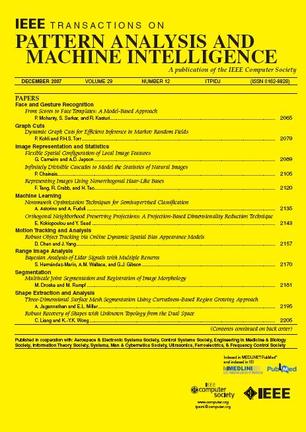为有效的低镜头泛化学习组合表征
IF 20.8
1区 计算机科学
Q1 COMPUTER SCIENCE, ARTIFICIAL INTELLIGENCE
IEEE Transactions on Pattern Analysis and Machine Intelligence
Pub Date : 2022-04-17
DOI:10.48550/arXiv.2204.08090
引用次数: 0
摘要
本文提出了一种受人类认知启发的图像编码方法——部分合成识别(RPC)。它基于认知理论,即人类通过组件识别复杂对象,并构建一个小而紧凑的概念词汇表来表示每个实例。RPC对图像进行编码,首先将其分解为显著部分,然后将每个部分编码为少量原型的混合物,每个原型代表一个特定的概念。我们发现这种受人类认知启发的学习可以克服深度卷积网络在低概率泛化任务中面临的障碍,如零概率学习、少概率学习和无监督域自适应。此外,我们发现使用RPC图像编码器的分类器对对抗性攻击具有相当的鲁棒性,而深度神经网络很容易受到对抗性攻击。考虑到我们的图像编码原理是基于人类的认知,人们会期望编码是人类可以解释的,我们通过众包实验发现了这种情况。最后,我们提出了这些可解释编码的应用,以生成综合属性注释的形式来评估新数据集上的零射击学习方法。本文章由计算机程序翻译,如有差异,请以英文原文为准。
Learning Compositional Representations for Effective Low-Shot Generalization
We propose Recognition as Part Composition (RPC), an image encoding approach inspired by human cognition. It is based on the cognitive theory that humans recognize complex objects by components, and that they build a small compact vocabulary of concepts to represent each instance with. RPC encodes images by first decomposing them into salient parts, and then encoding each part as a mixture of a small number of prototypes, each representing a certain concept. We find that this type of learning inspired by human cognition can overcome hurdles faced by deep convolutional networks in low-shot generalization tasks, like zero-shot learning, few-shot learning and unsupervised domain adaptation. Furthermore, we find a classifier using an RPC image encoder is fairly robust to adversarial attacks, that deep neural networks are known to be prone to. Given that our image encoding principle is based on human cognition, one would expect the encodings to be interpretable by humans, which we find to be the case via crowd-sourcing experiments. Finally, we propose an application of these interpretable encodings in the form of generating synthetic attribute annotations for evaluating zero-shot learning methods on new datasets.
求助全文
通过发布文献求助,成功后即可免费获取论文全文。
去求助
来源期刊
CiteScore
28.40
自引率
3.00%
发文量
885
审稿时长
8.5 months
期刊介绍:
The IEEE Transactions on Pattern Analysis and Machine Intelligence publishes articles on all traditional areas of computer vision and image understanding, all traditional areas of pattern analysis and recognition, and selected areas of machine intelligence, with a particular emphasis on machine learning for pattern analysis. Areas such as techniques for visual search, document and handwriting analysis, medical image analysis, video and image sequence analysis, content-based retrieval of image and video, face and gesture recognition and relevant specialized hardware and/or software architectures are also covered.

 求助内容:
求助内容: 应助结果提醒方式:
应助结果提醒方式:


